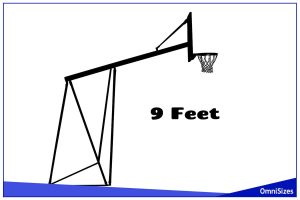If you’re trying to get a feel for what 6 centimeters looks like without a ruler, you’re going to have a tough time. 6 centimeters, which is about 2.3622 inches, is a tiny measurement. That’s where tiny everyday objects can come in handy as size references!
Take a look at this list of 10 objects that are close to 6 centimeters in length:
- 2 paper clip
- 2 tealight candles
- AA battery
- Credit card
- 9 thumbtacks
- 2/3 Crayon
- 4 marbles
- 1-2 Salt shaker
- Lipstick tube
1. 2 Paper Clips

Paper clips have a surprisingly fascinating history. Invented in the 1890s, they were originally marketed as “Gem clips.” This tiny wire wonder was even a symbol of resistance during WWII in Norway, as wearing one signified unity and solidarity against Nazi occupation.
When you’re trying to visualize 6 centimeters, just picture 2 standard-sized paper clips. Even if you use jumbo paper clips (1.3 inches long), you’d need a pair of them. A straightened paper clip, however, is just shy of 6 inches, halving that would also lead you to close to 6 centimeters.
2. 2 Tealight Candles

Tealight candles are quite the globetrotters. Originally used in Japan to keep tea warm (hence the name), they’ve lit up everything from cozy dinners to spa sessions worldwide. Their composition has evolved too, from paraffin to soy and beeswax, so there’s a choice for everyone!
Visualizing 6 centimeters is a breeze with tealight candles. Place 2 of these charming 1-1/2-inch candles side by side, and there you have it—roughly 6 centimeters. If all you have are birthday candles, a single candle will do.
3. AA Battery

AA batteries are quite the celebrities in the battery world. Invented in 1907, they’ve been energizing gadgets for over a century! Did you know there’s a ‘Battery of the Year’ award? You bet AA batteries have snagged a few of those trophies.
For a quick visual of 6 centimeters, just grab an AA battery. They’re about 5 centimeters long, so picture one with just a smidge more length. A D battery would be more appropriate (6.1 centimeters), but who has those on hand?
4. Credit card

Credit cards are slim rectangles of spending power that have a colorful past. The first ones, which were known as a Diner’s club card, were made of cardboard. They’ve since evolved into high-tech slivers with chips and holograms. They can also ruin a person’s finances and, therefore, life if you’re not careful.
One way to use a credit card without destroying your life is by turning it into a makeshift ruler. The width of a credit card is about 5.4 centimeters, which is pretty spot-on if you want to measure 6 centimeters. The length, on the other hand, is 8.5 centimeters.
5. 9 Thumbtacks

Invented in the late 19th century by the German inventor Johann Kirsten, thumbtacks were initially a hit among artists and mapmakers for pinning up their works. Their heads were even colored to match maps and paintings! They’ve become a staple in every school and office, where people need to keep track of things by posting sheets of paper on bulletins.
The length of a thumbtack’s pin is about a quarter of an inch or 0.635 centimeters. Line 9 of them together and you’ll have an array of thumbtacks spanning roughly 6 centimeters from end to end. Just be careful not to poke your finger on the pointy end!
6. 2/3 Crayon

Crayons are waxy coloring tools that add color to sheets of paper and children’s mouths if the parents aren’t careful. They’ve been around since the early 1900s. The term ‘crayon’ is actually a French word that translates to ‘pencil’ or ‘colored pencils.’ We wonder what they call colored pencils in France?
Anyway, a Crayola crayon measures about 3.6 inches or about 9 centimeters from top to bottom. Now, imagine dividing it into thirds and taking 2 of them—that will leave you with about 6 centimeters of colorful wax.
7. 4 Marbles

The origins of the simple marble can be traced back to the mid-1800s, but tiny spheres have been playthings since the dawn of man. They were even found in the ashes of Pompeii! Originally made from clay, glass, or even stone, marbles were used in various games by children across centuries. Some marbles are considered collectibles and can be worth a pretty penny.
Marbles come in an assortment of sizes, but they typically measure half an inch or 1.3 centimeters in diameter. Placing 4 of them in a straight line will get you pretty close to 6 centimeters, but there’s probably a large marble out there spanning 6 centimeters wide.
8. 1-2 Salt Shakers

Salt shakers are more than just kitchen tools that are also a huge part of culinary history. Invented in the 1920s to combat humidity issues with salt, these shakers quickly became a staple on dining tables. Some people even collect quirky and unique salt shakers, but they’re very rarely used for their actual purpose.
Visit 10 restaurants, and you’ll see 10 salt shakers of different sizes. The common salt shaker from IKEA known as PLATS stands 7 centimeters tall or 1 centimeter taller than what we need. Diner-style salt shakers are typically 3 centimeters high, so stacking 2 of them would get you closer to 6 centimeters.
9. Lipstick Tube

People have been using lipstick to add color to their faces since at least the time of the Ancient Ur. They would crush gemstones into fine powders before dabbing them on their lips. Other civilizations would crush bugs instead. If you thought the world has done away with bugs in our lipstick, think again.
Different brands use different lipstick tube sizes. A typical tube stands 7.6 centimeters in height, which is just as good as a salt shaker in measuring 6 centimeters. You can try removing the cover to shave a few millimeters off the top for a closer representation of 6 centimeters.






